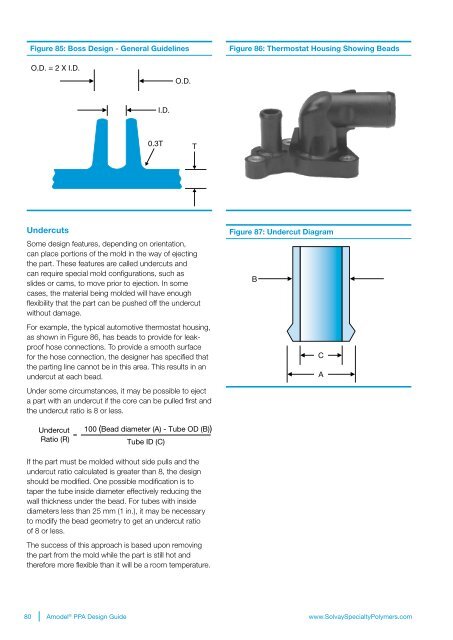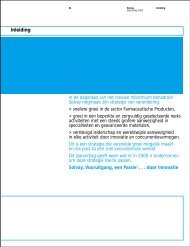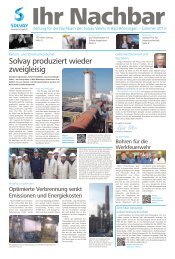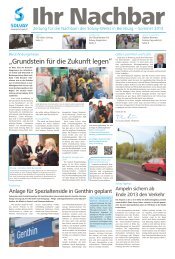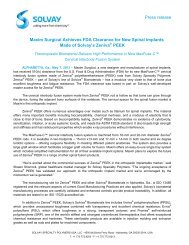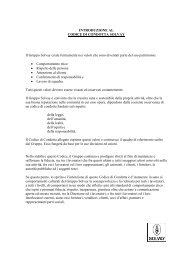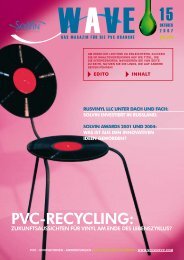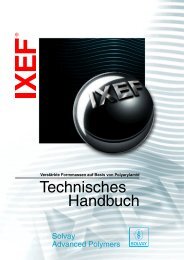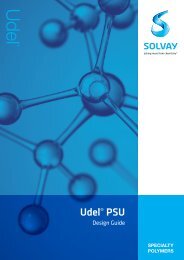Design Guide - Solvay Plastics
Design Guide - Solvay Plastics
Design Guide - Solvay Plastics
Create successful ePaper yourself
Turn your PDF publications into a flip-book with our unique Google optimized e-Paper software.
Figure 85: Boss <strong>Design</strong> - General <strong>Guide</strong>lines<br />
Figure 86: Thermostat Housing Showing Beads<br />
O.D. = 2 X I.D.<br />
O.D.<br />
I.D.<br />
0.3T T<br />
Undercuts<br />
Some design features, depending on orientation,<br />
can place portions of the mold in the way of ejecting<br />
the part. These features are called undercuts and<br />
can require special mold configurations, such as<br />
slides or cams, to move prior to ejection. In some<br />
cases, the material being molded will have enough<br />
flexibility that the part can be pushed off the undercut<br />
without damage.<br />
For example, the typical automotive thermostat housing,<br />
as shown in Figure 86, has beads to provide for leakproof<br />
hose connections. To provide a smooth surface<br />
for the hose connection, the designer has specified that<br />
the parting line cannot be in this area. This results in an<br />
undercut at each bead.<br />
Under some circumstances, it may be possible to eject<br />
a part with an undercut if the core can be pulled first and<br />
the undercut ratio is 8 or less.<br />
Figure 87: Undercut Diagram<br />
B<br />
C<br />
A<br />
Undercut<br />
Ratio (R)<br />
=<br />
100 (Bead diameter (A) - Tube OD (B))<br />
Tube ID (C)<br />
If the part must be molded without side pulls and the<br />
undercut ratio calculated is greater than 8, the design<br />
should be modified. One possible modification is to<br />
taper the tube inside diameter effectively reducing the<br />
wall thickness under the bead. For tubes with inside<br />
diameters less than 25 mm (1 in.), it may be necessary<br />
to modify the bead geometry to get an undercut ratio<br />
of 8 or less.<br />
The success of this approach is based upon removing<br />
the part from the mold while the part is still hot and<br />
therefore more flexible than it will be a room temperature.<br />
80 Amodel ® PPA <strong>Design</strong> <strong>Guide</strong><br />
www.<strong>Solvay</strong>SpecialtyPolymers.com


